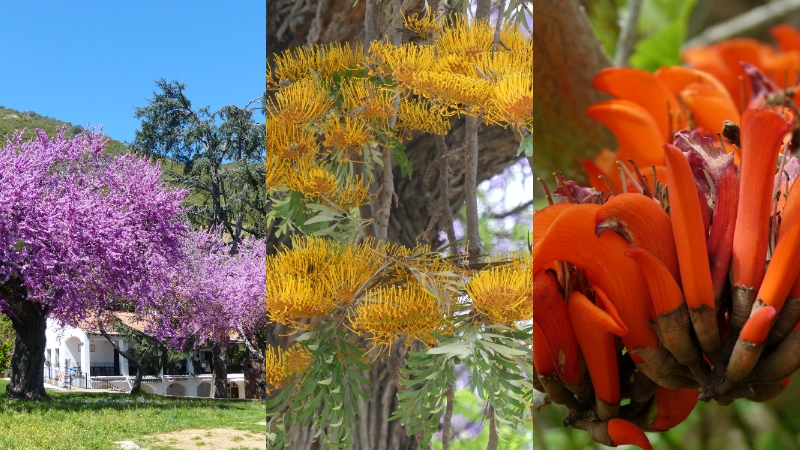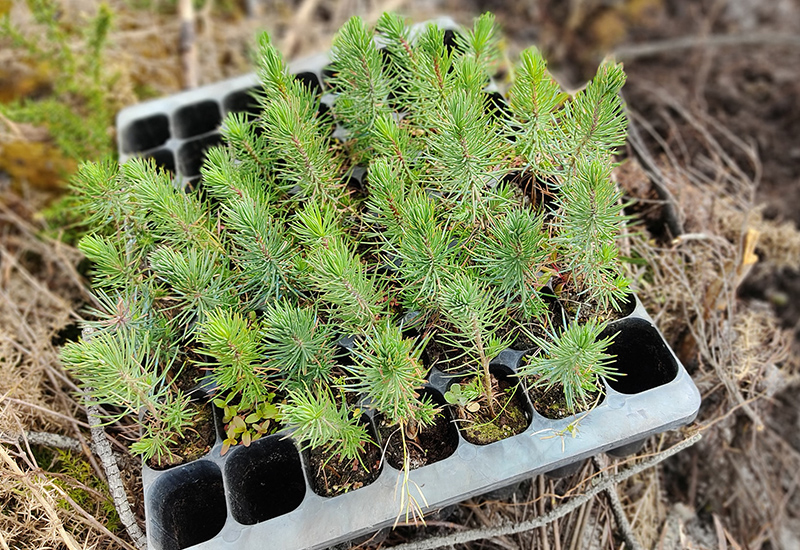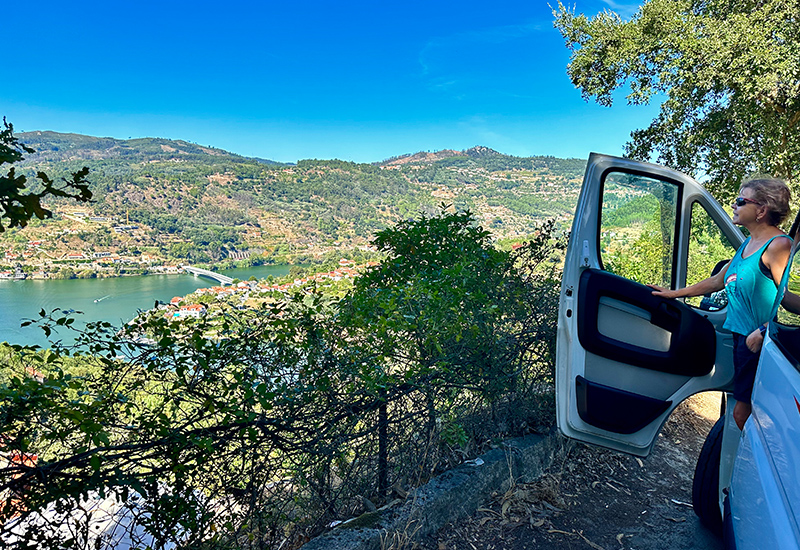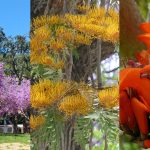By Tamsin Varley
Following on from last month’s article about flowering trees, I have now chosen another four beautiful species to share with you.
THE JUDAS TREE

Cercis siliquastrum, also known as the Judas tree, looks amazing in March and is a common wild tree in the Algarve. It’s easily spotted on roads up to Monchique and around Loulé. It is quite a slow growing tree or large shrub. I planted one in my garden about fifteen years ago and it is now about four metres tall with a spread of three metres. It is drought tolerant once established and can grow in poor stony soils. Plant when small though, as it does not like being transplanted when larger.
In spring, it makes a spectacular sight when the branches, twigs and sometimes even the main trunk are smothered in pink pea shaped flowers. They are replaced by long-lasting, reddish, flattened pods that can persist long after the leaves have fallen in autumn. After the flowers, the attractive deciduous leaves emerge, which are bright green and heart-shaped, so that the tree continues to look most attractive over the summer too.
THE SILKY OAK

A fast-growing and easy tree is Grevillea robusta, also known as the silky oak, which is native to Australia. It can grow up to thirty metres high with a spread of ten metres so do allow a lot of space for it. It is also what I would describe as a messy tree in that it drops a lot of leaves especially in the spring, which do not seem to rot down, so bear that in mind when choosing a planting site. It has delicate fern-like leaves which are silvery underneath. The yellow flowers appear in spring in dense clusters and are very showy. It is an easy tree to grow as it thrives in most soils and is drought tolerant once established.
THE CORAL TREE

A tropical tree that seems to do well in Portugal is the coral tree or Erythrina species. I’ve seen them in quite a few private gardens in the Algarve and there is also a very nice group of them by Aldi in Lagoa. There are two species here – E. caffra and E. crista-galli. Be warned though that both species have thorns on the trunk and branches, which can be vicious.
The larger of the two is Erythrina caffra which is native to South Africa. It is a slow growing tree that typically reaches about ten metres high and forms a wide spreading canopy. It needs full sun and does better with some moisture in the soil, but can tolerate drought when established. In spring, the bare branches produce terminal clusters of bright orange, showy tubular flowers. After flowering, the heart-shaped leaves appear, which are made up of three leaflets.
Erythrina crista-galli is native to Brazil, Uruguay and northern Argentina. It is a much smaller tree or+ small bush and grows up to four metres tall and is densely branched. In spring, the red-pink flowers emerge along the ends of the branches and are beak-shaped, arranged in clusters. This species tolerates cold quite well, but requires a sheltered position as it needs protection from the wind and, like its close relative, should be in full sun.
Tamsin Varley is a member of Clube Dos Bons Jardin. This small, friendly multinational garden club meets at different locations around the Algarve on the 2nd Tuesday of every month with an optional lunch afterwards.
algarvecbj@gmail.com














